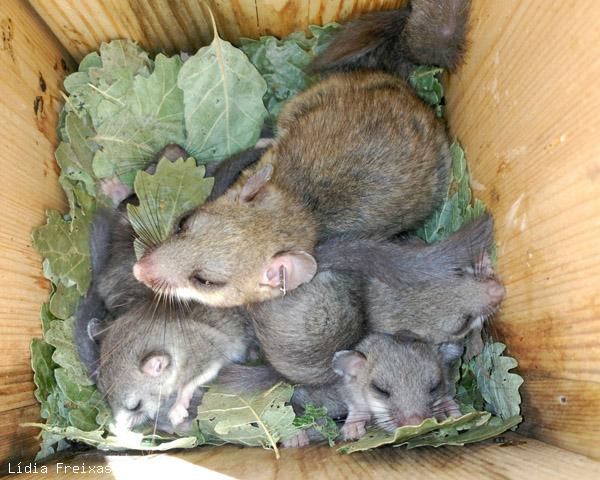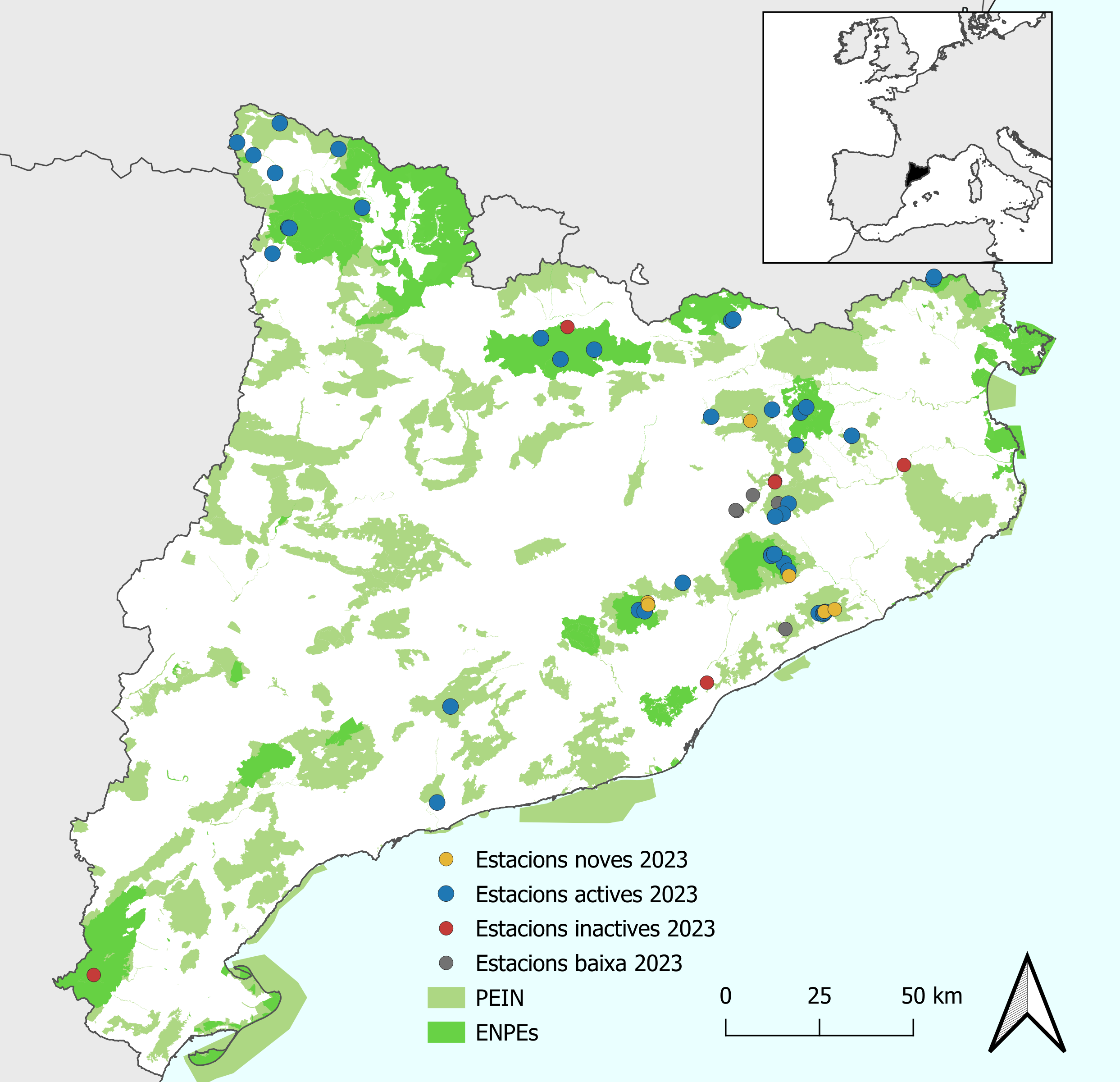Dormouse Project
This initiative focuses on the population monitoring and study of the edible dormouse (Glis glis) in Catalonia and in different parts of the Iberian Peninsula.
It has a monitoring programme coordinated by the Natural Science Museum of Granollers, as well as a broad network of stations and collaborators that enable a permanent collection of data.

What do we try to achieve?
- Know the population variations of this species and their causes related to changes in the climate and the environment by means of a simple and efficient methodology.
- Strengthen the network and collect data on the species throughout its distribution in the Iberian Peninsula.
- Define key aspects of its demography (survival, fertility, etc.).
- Establish the main threats to the species within the framework of the process of global change (climate and land use change, etc.).
- Obtain data on the species in those areas at the limit of its distribution.
- Provide information for a forest management that is more compatible with biodiversity.
- Publicize the species in order to raise public awareness and invite volunteers to participate in the monitoring programme.
- Collect data on other species that share the habitat with the edible dormouse.
Why the edible dormouse?
- Iberian populations have been negatively affected by the low availability of natural cavities derived from the intense exploitation of forests until the mid-20th century.
- Its specialist and hibernating nature makes it a very sensitive species to environmental changes and habitat disturbance.
- As a small forest mammal, it becomes an important part of the base of the food web in these environments, and a recurrent prey in the diet of emblematic and endangered carnivores, such as the European wildcat (Felis silvestris).
- The Iberian Peninsula is the south-western boundary of the European distribution of the species, but its presence in some areas is uncertain due to a lack of information. Monitoring allows us to delimit the real boundaries of its distribution.
- The most southern populations of the Iberian Peninsula are found in Catalonia. Their study can provide fundamental information on the adaptive capacities of the species in the context of global change, which will reduce the optimal habitat available.
- Despite being a very difficult animal to see in the forest, the nest boxes are an excellent tool for its detection and study, as well as for its dissemination.
- Continuous and systematic monitoring over time allows us to know how their populations fluctuate and how changes in climate and landscape will affect them.
Outreach and awareness raising
Background and history of the monitoring programme
Arboreal and nocturnal, the edible dormouse is a very difficult species to see and study, as it rarely comes down to the forest floor during its active period (spring-autumn). Therefore, conventional trapping does not usually provide much information on the species, creating the necessity to have other sampling systems. The edible dormouse easily occupies wooden nest boxes, which have allowed us to obtain abundant information on its biology and population dynamics in Europe. The lack of studies in the Iberian Peninsula and the few existing records of this species in Catalonia prompted us to initiate, during 2004, the first monitoring programme focused on this species in Montnegre i el Corredor Natural Park. From 2007, the good results obtained encouraged the expansion of the monitoring programme to other areas of the Catalan territory, but also throughout the peninsula, where it currently has stations in 5 autonomous communities.
In Catalonia, after more than a decade of monitoring, the Dormouse Project is becoming increasingly consolidated.

Financial and logistical support
In Catalonia, the project has had the financial and logistical support of the “Diputació de Barcelona” since 2004, the Consell General d’Aran since 2013 and the Generalitat de Catalunya since 2019. This support is associated to the various natural areas, managed by these administrations, where the project is being deployed.
Other entities outside Catalonia:
- Andorra: el Centre d’Estudi de la Neu i la Muntanya d’Andorra (CENMA)
- Basque country: la Diputació Foral d'Àlaba, la Diputació Foral de Biscaia i el grup d’anellament Txepetxa.
- Rioja: el Parc Natural de la Serra de la Cebollera.
- Galicia: la Associació per la Defensa Ecològica de Galicia (ADEGA) i l’empresa SOREX, Ecologia i medi ambient S.L.
Active sites number